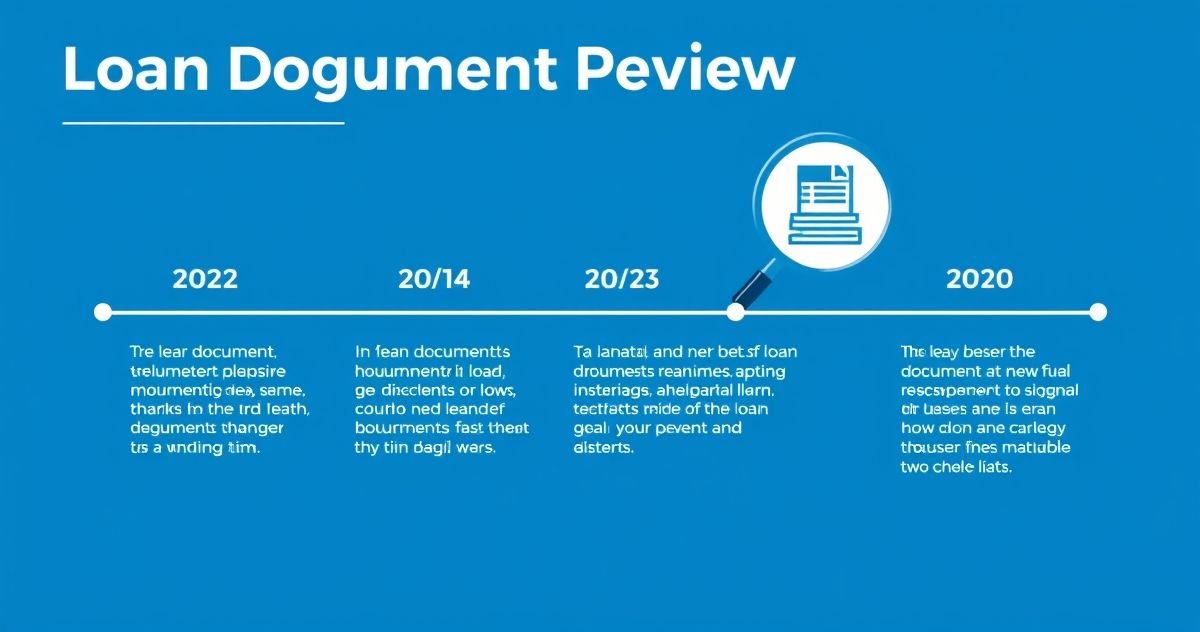Buying a home or refinancing involves important financial decisions and paperwork. To protect borrowers, the Loan Disclosure Review Timeline enforces a mandatory waiting period before closing.
Background: The ‘Know Before You Owe’ Rule
In response to the 2008 financial crisis, the Consumer Financial Protection Bureau (CFPB) introduced the TILA-RESPA Integrated Disclosure (TRID) rule in 2015. This regulation, commonly called the “Know Before You Owe” rule, aims to improve mortgage transparency and give borrowers a clear understanding of their loan terms before committing.
Key Documents in the Loan Disclosure Review Timeline
The timeline centers on two critical documents:
- Loan Estimate (LE): Provided within three business days after application, this document outlines the estimated costs and loan terms, enabling borrowers to compare offers.
- Closing Disclosure (CD): Due at least three business days before closing, this document details the final loan terms and costs.
The Three-Business-Day Review Period
Once you receive the Closing Disclosure, federal law requires a minimum three-business-day waiting period before signing. This window allows you to:
- Compare final terms with your earlier Loan Estimate
- Confirm the interest rate, monthly payments, and closing costs
- Identify any unexpected fees or changes
For example, if your closing is Friday, you must receive the CD by Tuesday. The days Wednesday through Friday count as your review period. Note that Saturdays count as business days, but Sundays and federal holidays do not, according to CFPB guidelines.
What Triggers a New Three-Day Review Period?
If your loan’s terms change significantly after receiving the Closing Disclosure, you must be given a new three-day review period. The CFPB defines major changes as:
- An increase in the Annual Percentage Rate (APR) of more than 0.125% (fixed-rate loans) or 0.25% (adjustable-rate loans)
- Addition of a prepayment penalty
- Change in the loan product, such as switching from a fixed-rate to an adjustable-rate mortgage
Minor changes, such as small corrections or changes in escrow amounts, typically do not reset the timeline.
Borrower Tips for Using the Review Period Effectively
To make the most of your review time:
- Open and read your Closing Disclosure promptly upon receipt
- Compare it carefully with your Loan Estimate
- Ask your lender or real estate agent to explain any unfamiliar fees or terms
- Never feel pressured to waive your rights or sign before the review period ends
Loan Disclosure Timeline Summary
| Document | Delivery Timing | Purpose |
|---|---|---|
| Loan Estimate (LE) | Within 3 business days of application | Provides estimated loan costs and terms for shopping |
| Closing Disclosure (CD) | At least 3 business days before closing | Shows final loan terms and costs; initiates review period |
| Revised Closing Disclosure | If significant loan terms change | Resets the 3-day review period before closing |
FAQs
Can I waive this three-day review period?
Generally, no. It is a mandatory consumer protection, unless in rare cases of bona fide financial emergencies with written documentation.
When is the Closing Disclosure considered “received”?
By law, receipt occurs when you first open the document electronically or three business days after mailing if sent by mail.
What if my closing date changes?
If the delay does not affect loan terms, a new Closing Disclosure or review period is usually not required.
For more detailed information, see our related articles on Closing Disclosure and the Loan Estimate.
For official guidance, visit the Consumer Financial Protection Bureau website at CFPB.gov.

